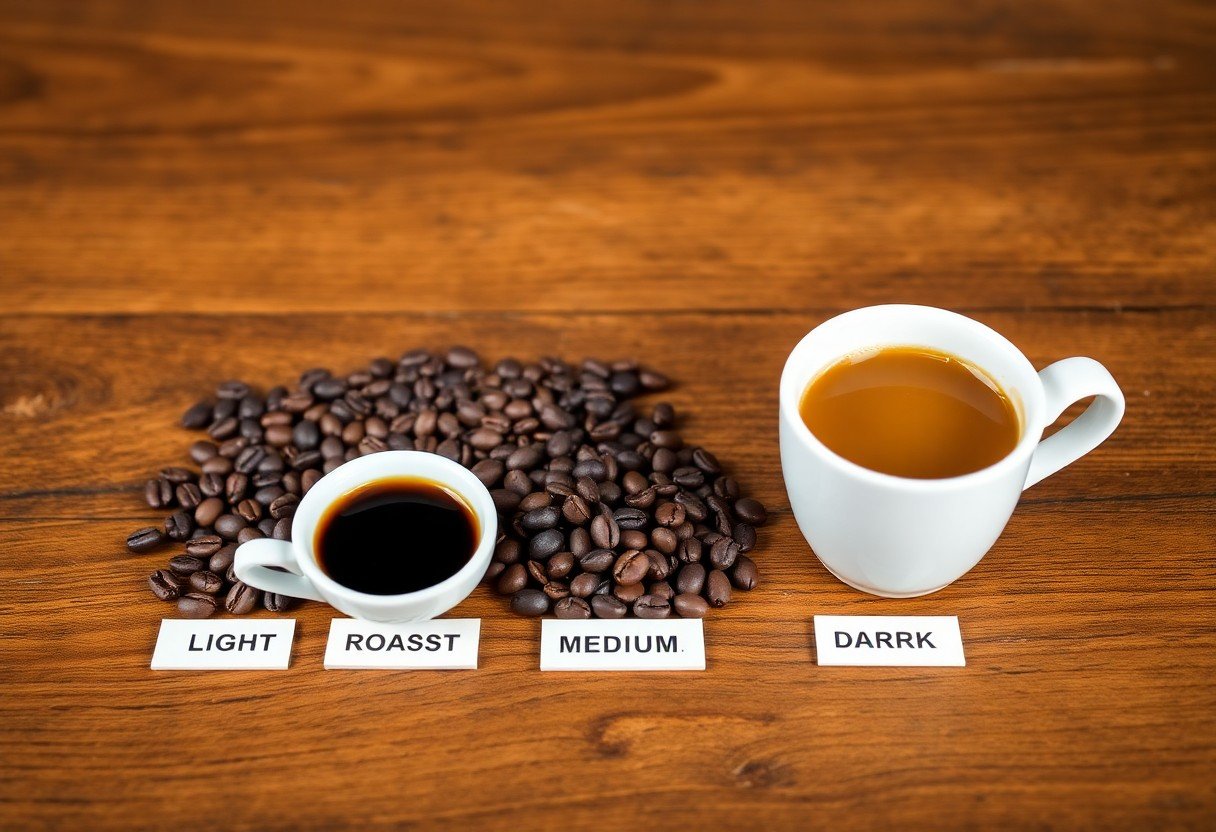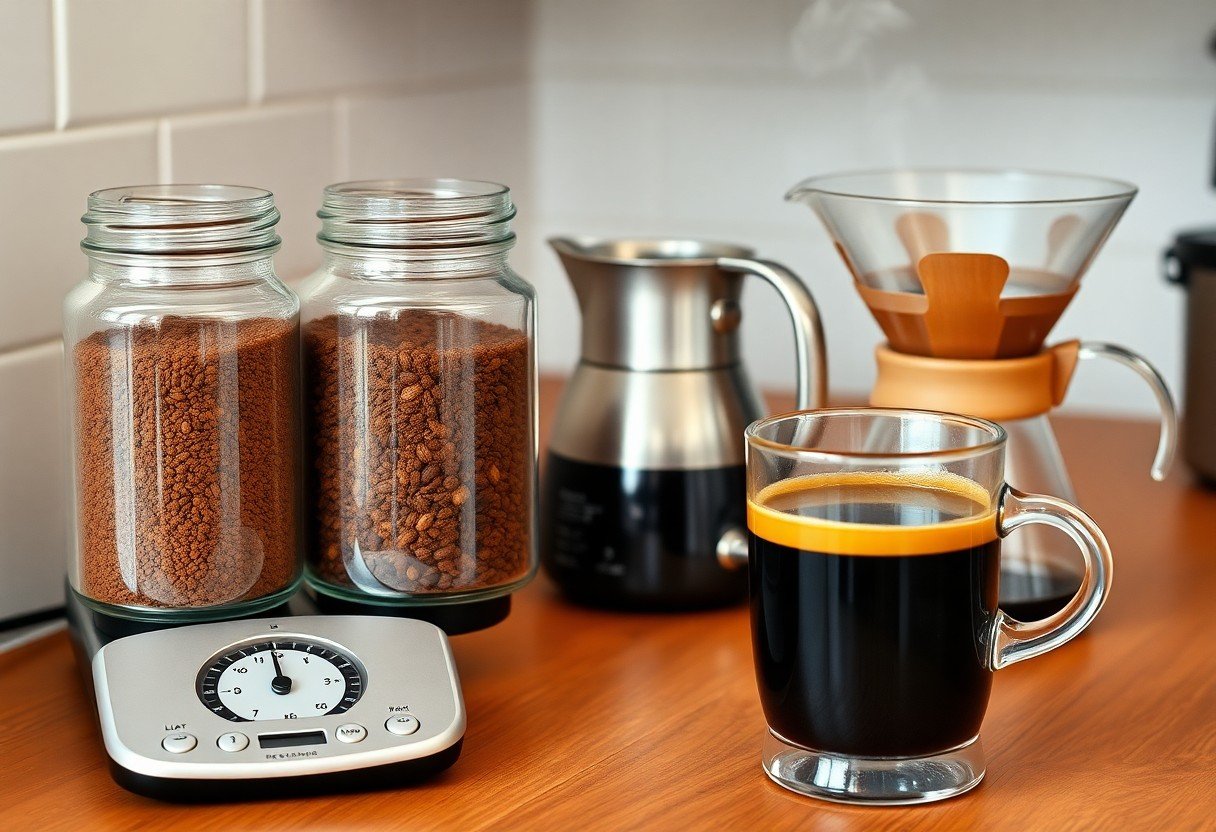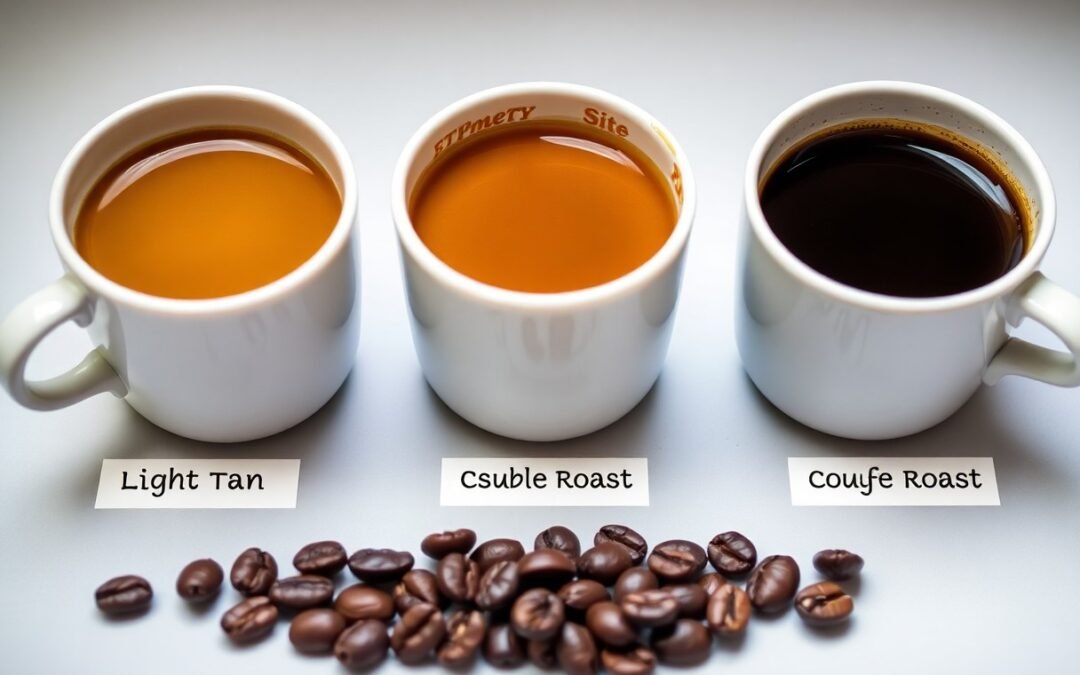Flavor nuances in coffee are profoundly affected by roast levels, influencing your overall tasting experience. As you explore various roasts, you’ll discover how light, medium, and dark profiles can highlight distinct tastes, aromas, and textures. This post will guide you through the intricacies of roast levels, helping you understand how even the subtlest variations can enhance or diminish flavor notes, ultimately transforming your appreciation of this beloved beverage.

The Science of Roast Levels: What Happens to Coffee Beans
Your coffee beans undergo significant transformations during roasting, altering their flavor profile, aroma, and acidity. As beans are exposed to heat, the moisture evaporates, sugars caramelize, and complex chemical reactions unfold, ultimately developing the distinct taste characteristics associated with different roast levels. Understanding these changes empowers you to appreciate your coffee on a deeper level.
Chemical Changes During the Roasting Process
During roasting, the Maillard reaction occurs, where amino acids and reducing sugars interact, creating new flavors. This reaction starts around 300°F (150°C) and intensifies as the temperature increases. At higher temperatures, various compounds degrade, resulting in the breakdown of chlorogenic acids, elevating acidity while introducing bitter notes as the roast darkens. These alterations are what give your coffee its nuanced flavors and aromas.
The Impact of Roast Duration and Temperature
Roast duration and temperature significantly influence your coffee’s taste profile. Longer roast times at higher temperatures yield darker roasts, enhancing bitterness and reducing acidity. Conversely, shorter, lower temperature roasts maintain vibrant acidity and highlight fruity or floral notes. Each combination leads to distinct flavor outcomes, allowing you to select a roast that aligns with your palate.
Impact of Roast Duration and Temperature
| Short Roast Duration | Preserves acidity, highlights fruity and floral flavors. |
| Long Roast Duration | Increases bitterness, reduces acidity, enhances chocolatey or smoky notes. |
| Low Temperature | Develops brighter flavors with complex acidity. |
| High Temperature | Creates bold, rich tastes with deeper bitterness. |
More About Roast Duration and Temperature
| Medium Roast | Offers a balance of sweetness and acidity, often highlighting caramel notes. |
| Dark Roast | Features bold, smoky flavors, often with a diminished acidity level. |
| Flavor Development | Longer roasting times can produce burnt or charred flavors, while shorter intervals focus on brightness. |
| Temperature Control | Precision in temperature control during roasting allows for the optimization of desired flavor profiles. |
Taste Profiles: Deciphering Flavor Attributes Across Roast Levels
Light Roast: Bright Acidity and Nuanced Flavors
Light roasts often reveal a vibrant acidity and complex flavor profiles that showcase the unique characteristics of the coffee bean. These roasts retain more of the original coffee’s flavors, allowing hints of fruit, floral notes, and a crisp mouthfeel to shine through. Sipping a light roast, you might discover profiles ranging from citrusy brightness to delicate sweetness, each cup presenting an opportunity to taste the distinct terroir of the beans.
Medium Roast: The Balance of Sweetness and Body
Medium roasts strike a harmonious balance between acidity and sweetness, providing a fuller body while retaining some of the original bean’s flavors. The caramelization of sugars during the roasting process adds depth, often introducing notes of chocolate, nuts, or caramel. This roast level appeals to a wide range of palates because it harmonizes the brighter acidity of lighter roasts with the richness found in darker ones.
Medium roasted beans achieve a roast time that usually falls between 10 to 12 minutes, producing a coffee that is aromatic and flavorful but not overwhelming. You’ll notice a well-rounded cup that often features a synergy of sweet and savory notes. Whether it’s a classic Colombian or a vibrant Guatemalan, the balanced profile invites you to enjoy a versatile drinking experience, perfect for both morning brews and afternoon pick-me-ups.
Dark Roast: Boldness and Bitterness Redefined
Dark roasts present a bold flavor profile characterized by rich, heavy body and pronounced bitterness. The prolonged roasting process transforms the beans, often resulting in notes of dark chocolate, smoke, and toasted caramel. This level of roasting detracts some of the bean’s original attributes but enhances depth and intensity, providing a robust cup that satisfies those craving powerful flavors.
With dark roasts, roasting times generally exceed 12 minutes, leading to the characteristic oily sheen on the beans. The result is a complex taste experience where the bitterness becomes a defining feature, often appealing to espresso lovers and those who enjoy indulgent flavored coffees. You might find that a well-crafted dark roast showcases a lingering aftertaste, inviting contemplation with every sip, a true testament to the artistry of coffee roasting.
The Role of Origin: How Bean Varieties Interact with Roast Levels
Your coffee’s origin significantly shapes its flavor profile, with each region producing distinct bean varieties that respond differently to roasting. For instance, Ethiopian beans often retain floral and fruity notes even at darker roast levels, whereas Colombian beans might develop a rich, caramel-like sweetness. Understanding these nuances allows you to appreciate how subtle roast level adjustments can enhance or mask intrinsic flavor characteristics, leading to a more refined tasting experience.
Regional Flavor Traits and Their Expression
The Influence of Processing Methods on Taste Perception

Brewing Techniques: Maximizing Flavor Potential with Roast Type
Understanding how different brewing methods complement specific roast levels enhances your coffee experience. Various techniques can highlight the unique characteristics of light, medium, and dark roasts, allowing you to enjoy the full range of flavors. From the precision of pour-over to the boldness of French press, choosing the right method can transform your cup. Explore how each technique can bring out the best in your favorite roast profiles.
Best Brewing Methods for Each Roast Level
Light roasts shine with methods like pour-over and Chemex, which emphasize clarity and brightness. Medium roasts flourish with drip coffee and AeroPress, balancing complexity and sweetness. Dark roasts benefit from French press or espresso, enhancing their body and richness. Selecting the appropriate method caters to the specific taste attributes inherent in each roast type, ensuring a delightful experience.
Adjusting Grind Size and Water Temperature for Optimal Extraction
Grinding coffee beans to the right size is necessary for proper extraction, significantly influencing flavor. Light roasts require a finer grind to enhance extraction while maintaining acidity, whereas medium roasts perform well with a medium grind for a balanced taste. Dark roasts, benefiting from a coarser grind, minimize bitterness and highlight their robust flavors. Additionally, water temperature plays a role; hotter water extracts flavors more efficiently but can over-extract delicate light roasts if not monitored.
Best Grind Sizes and Water Temperatures
| Brew Method | Grind Size / Temperature |
|---|---|
| Pour-over | Fine grind / 195-205°F |
| Drip coffee | Medium grind / 200°F |
| French press | Coarse grind / 200-205°F |
| AeroPress | Medium to fine grind / 195-205°F |
Grind size paired with water temperature influences extraction rates, making adjustments necessary for each roast. For instance, if your light roast tastes flat, a finer grind combined with slightly hotter water can uplift its acidity. Conversely, if your dark roast feels overly bitter, using a coarser grind and cooler water can soften those harsh notes. Fine-tuning these variables allows you to extract the fullest flavor profiles, ensuring a satisfying cup every time.
Extraction Variables
| Variable | Impact on Flavor |
|---|---|
| Grind Size | Affects surface area and extraction rate |
| Water Temperature | Impacts extraction efficiency and flavor balance |
Expert Opinions: Coffee Sommeliers Weigh In
Coffee sommeliers possess a refined understanding of how subtle roast levels can dramatically alter flavor dynamics. Through guided tastings, they expose you to the intricate shifts in acidity, sweetness, and bitterness that emerge with each roast variation. Their training emphasizes not only the sensory experience but also the storytelling aspect of coffee, shedding light on how geographical and agricultural factors influence taste outcomes.
The Art of Tasting: Professional Palate Insights
Professional tasters leverage their extensive training to identify distinct flavor notes that you might overlook. They articulate differences in fruitiness, floral notes, or nutty undertones that emerge as roast levels vary. This level of expertise allows you to appreciate the nuanced layers of flavors, making each cup a unique exploration.
Flavor Descriptors that Differentiate Roast Levels
The vocabulary used by coffee professionals to describe flavors is important for distinguishing roast levels. Light roasts often introduce bright notes like citrus or berry, while medium roasts evolve into caramel and chocolate undertones. Dark roasts present bold flavors, including smoky or bittersweet profiles. Understanding these descriptors enhances your ability to choose a roast that aligns with your taste preferences.
Common flavor descriptors help you navigate the diverse world of coffee. For instance, light roasts might evoke flavors of green apple and jasmine, while medium roasts could introduce smooth caramel and honey notes. In contrast, dark roasts often feature molasses or dark chocolate characteristics, with undertones of roasted nuts or tobacco. By familiarizing yourself with these terms, you can better communicate your preferences, explore new roasts, and refine your tasting skills, making your coffee experience richer and more enjoyable.
Conclusion
Considering all points, subtle roast levels play a significant role in transforming your coffee taste experience. Light roasts highlight acidity and floral notes, enhancing your sensory perception, while medium roasts balance sweetness and body, providing complexity. Dark roasts emphasize boldness and bitterness, creating a robust flavor profile. By understanding these nuances, you can make informed choices that elevate your coffee enjoyment, leading to a richer appreciation of each cup you brew.
FAQ
Q: How does a light roast affect the flavor profile of coffee?
A: A light roast highlights the coffee’s natural acidity and fruity or floral notes. The longer roasting process caramelizes sugars, so these flavors remain more pronounced compared to darker roasts.
Q: What are the taste characteristics of a medium roast?
A: Medium roasts provide a balance of acidity and body. They often feature a complex flavor profile, combining the bright notes of lighter roasts with more developed flavors of chocolate or nuts without overshadowing the original bean characteristics.
Q: How does a dark roast change the sweetness of coffee?
A: A dark roast tends to reduce the inherent sweetness of the coffee, emphasizing bitterness and smoky flavors instead. The intense heat during roasting breaks down sugars, resulting in a deeper, bolder taste with less acidity.
Q: Why does the origin of the coffee beans matter in relation to roast level?
A: The origin affects the flavor potential; different coffee-growing regions produce beans with unique taste profiles. Roast levels can amplify or mute these traits, allowing certain regional characteristics to shine through or become less noticeable.
Q: How can brew method influence the perception of roast levels?
A: Brew methods interact with roast levels by extracting different compounds. Techniques like espresso or aeropress can highlight bold flavors in dark roasts, while pour-over methods may enhance the acidity present in lighter roasts, altering the overall taste experience.

